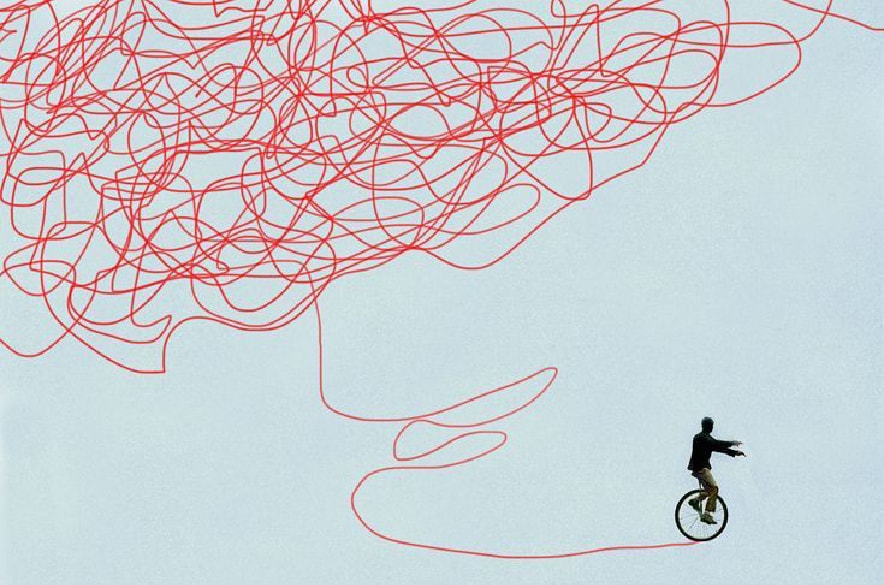5 Traps Savvy Social Entrepreneurs Avoid

There it is again. Creeping up from your stomach. A cold tightening fear that stops you in your tracks. Analysis paralysis has once again set in. Sound like a bad script for a B grade horror movie? Maybe, but in social entrepreneurship, this fear is often all too real.
Sometimes it’s easier to know what not to do when running a social enterprise, than what to do and how to best move forward.
We wrote about the 4 M’s of a sustainable social enterprise, and now we are going to share with you the 5 biggest traps that savvy social entrepreneurs avoid to build a sustainable and impactful social enterprise.
Over the past 7 years here at The Difference Incubator (TDi), we’ve worked with more than 400 mission led-enterprises, both through our Two Feet Accelerator and our consulting with mission-led enterprises.
The following are some of the most common traps we’ve seen social entrepreneurs encounter, and have worked with them to overcome.
Falling in love with your business model
This is by far the biggest mistake we see social entrepreneurship fall into.
But first, let’s unpack why this is an issue.
At TDi, there have been more than a few times that people have come to us with an idea for a cafe that creates impact. While this is by no means a bad thing, what we find challenging is when they get stuck on the idea of a cafe that creates impact and then go full steam ahead without deeply diving into how this cafe is going to lead to true social or environmental change. Slowing down and designing your business model around your mission, while slower and often more work, can mean deeper impact.
Furthermore, organisations and people who are tackling some of the world’s most entrenched and wicked social and environmental issues aren’t going to do this overnight. These issues are highly complicated and your first ‘solution’ or reply to address one of these issues is often not the right one.
What does this mean for your business? That you will need to try and test multiple models before you find one that is both financially sustainable and creates the intended impact you aim to make.
Creating a sustainable enterprise is challenging. It’s even more challenging when you stick with one model and don’t remain agile and adaptable to changing market conditions, and new information.
Turning into the ‘Heropreneur’
A Heropreneur for those of you who don’t know, as described in an article by the Stanford Social Innovation Review, is a founder who is greatly admired as if a hero and is viewed as the main actor in social progress.
Sometimes when we are just starting out on our changemaking journey, it can be a natural reaction when you become aware of a certain social or environmental issue to become deeply impassioned and personally moved by what you have learnt, seen or heard.
It can feel like you are the only person who cares about this issue, and it can awaken life-changing questions that can deeply impact who you are as a person or how you act.
However, most (if not all) issues in the world aren’t felt by just you, and can’t and won’t be solved just by you.
Strive to understand the other organisations working towards similar goals and go and speak to them. Sometimes starting up your own enterprise might not be the best route to creating change on the issue you are working to address and sometimes you might be duplicating a great program or service that already exists.
If you do enter into social enterpreneurship yourself, check in with yourself regularly to see how much external attention is on yourself and your enterprise, rather than the problem or beneficiaries you are seeking to support, analyse how well you are collaborating with other like-minded people and organisations to achieve greater social impact, and finally understand where you might be ‘othering’ through your storytelling.
Designing for, not with
This trap applies mainly to your product or service that you are creating.
The main message here is to truly understand your customer. If you don’t have a customer you don’t have a business model.
The best way to understand your customer? Get out of the office and speak to them!
More often than not entrepreneurs will spend their time, in the beginning, creating a business plan or business model that will outline how much impact their business will make and how it is going to change the world, yet haven’t actually spent time testing any of these claims or assumptions.
Rather than spending countless hours creating a beautiful slide deck, or a 50-page business plan, spend your time talking to customers and designing the product with them, figuring out their pain points, and what job your product or service will do for them.
Figure out how this product will make them think, feel, how much they would pay for it, whether or not they will recommend it to a friend, and spend your time testing all of the assumptions that your business model rests on.
To quote the Silicon Valley serial-entrepreneur, Steve Blank, “In a startup, no business plan survives first contact with customers.”
This statement couldn’t be truer.
Going after investment first, before building your business model
There is a common trap in the startup world that the trajectory of any successful startup is as follows:
- Come up with an innovating ground-breaking idea,
- Pitch said idea to funders and investors,
- Get a huge investment,
- THEN run and scale your business for massive growth!
There are two problems with this type of thinking.
The first is that if we want to truly build a more sustainable and inclusive world, we need to stop with this super-growth-hacking-massive-scaling mentality.
Not only is this a rare trajectory, but also it builds a culture of growth for the sake of growth reinforcing the systems and issues that we social entrepreneurship advocates are working hard to help solve.
Secondly, and this is the big one – you don’t always need investment to get your idea off the ground.
Instead, start off small, and build a product that produces revenue from your customers. Focusing on your customers is how you build a financially sustainable social enterprise and one that is not reliant on grants, donations or external funding to create impact.
Here are the steps we would encourage you to follow instead:
- Find a problem you are passionate about solving,
- Work with experts who understand the ins and outs of the problem you are trying to solve (bonus points if you work to listen and understand the people who are actually living this problem),
- Once you have nailed down your mission, build a business model (notice we didn’t say business plan),
- Test this business model cheaply and fast, and don’t forget to measure the impact,
- Determine if it is feasible, desirable, and viable,
- Reassess what you have learnt, and redesign your business model,
- Test again,
- Rinse and repeat.
While there are more steps here, what you end up with is a validated business model that has been strategically designed with your mission in mind, with fewer resources and time wasted.
Thinking you have to compromise on either the financial or the impact side of your mission-led enterprise
When people first come to us with an idea at TDi it usually takes the form of a make and give model: you make money through the operations of a business and you give a percentage of that to charity, or to a cause.
Does this work for some enterprises? Yes. However, we would argue that to create a true mission-led enterprise, you will need to integrate the concept of blended-value into the core of business operations.
We define blended value as “the delivery of both a social or environmental return and a financial return. It’s a win-win that does not require compromise on either side of the social or financial equations.”
Businesses that deliver true blended-value, seamlessly combine ‘doing good and making money’. In other words, they deliver measurable social and/or environmental outcomes and are commercially viable, by design.
We fundamentally believe that these two objectives can be integrated into the same business model. We also believe that doing good and making money are mutually beneficial, not mutually exclusive.
Social enterprises in Australia that have a profit distribution model as their only avenue for creating impact, means that they are wholly reliant on their ability to make a profit to do good. They miss out on using the most powerful part of their business, their activities, for doing good.
Not convinced that you can both do good AND make money? Check out some of these amazing mission-led enterprises: Streat, Digital Storytellers, Youthworx, Farmwall, Two Square Pegs, and Feathersome.
Looking for more support in your mission-led social entrepreneurship journey? Check out our Two Feet Accelerator, that has been designed for mission-led social entrepreneurs by mission-led entrepreneurs, to help you take your impact and your business to the next level.
 Jackie Colmar is the Head of Comms at TDi. TDi was founded by entrepreneurs and impact investors to unlock the potential of private capital for public good. We work with enterprises and not-for-profits to design models that address today’s biggest social and environmental challenges, whilst delivering competitive financial returns.
Jackie Colmar is the Head of Comms at TDi. TDi was founded by entrepreneurs and impact investors to unlock the potential of private capital for public good. We work with enterprises and not-for-profits to design models that address today’s biggest social and environmental challenges, whilst delivering competitive financial returns.



1 Comment